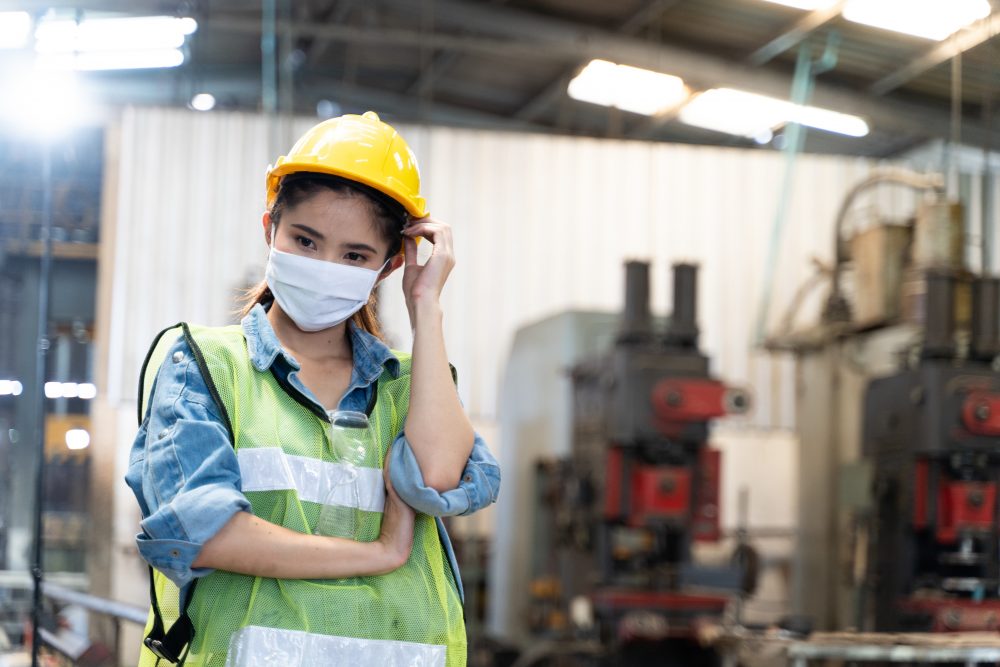
Converting COVID-19 chaos into opportunity
July 21, 2020
By
Som Mukherjee
Health and safety are at war in workplaces due to the virus

OH&S professionals can convert COVID-19 chaos into an opportunity to build a robust system. (Adobe Stock)
One of the most common trade-offs in business is between occupational health and safety (OH&S) and production.
Safety professionals are continuously putting in efforts to find the best solutions where both the entities can go hand in hand, keeping safety in priority.
COVID-19 has put these two management system components at war.
The conflict
Generally speaking, if it’s a healthier occupational hygiene approach, then it’s also a safer approach at our workplaces and also vice versa. These two are sometime not only highly interconnected, but also inseparable — like whisky and water.
For example, if a local ventilation is being used to take out toxic vapours of a task, then it’s not only healthy for the workers at the point of work, but it is also solving other safety issues that could be related to the vapour, such as incidents due to poor visibility.
However, COVID-19 has thrown us new challenges in both our daily life and work life.
Scientists and medical professionals have provided constant guidance and support. However, like always, something is there that we need to handle by ourselves, and this conflict is unique.
The chaos
Health and safety are at war in workplaces and it’s very unusual.
The precautions to minimize the COVID-19 exposure are leading towards one or more safety hazards. This conflict is gliding us towards the chaos.
Below are a few examples of COVID-19 workplace precautions and associated safety issues:
Use of masks
- problematic for workers with breathing issues
- false sense of security or confusion with surgical masks while working with chemicals/dusts
- poor housekeeping due to improper disposal
Plexiglas usage
- stuck hazards
- sense of confinement
- poor visibility.
Minimization of workers at workplace
- The same job with limited numbers of workers could lead to unsafe work practices/shortcuts/excess workload.
- Excess workload results in physical as well as mental health issues. These again could lead to serious workplace accidents.
Avoiding non-critical programs to ensure minimum exposure
- Cancelling or postponing the internal audit program could slow down the continual improvement and bring complacency.
- Cancelling non-regulatory (mandatory) trainings could have serious impacts on the safety culture.
- Eliminating or poorly conducting programs that require close team work — such as emergency response mock drill — would hurt the safety system.
- Could generate difference of opinion at workplaces regarding safe and unsafe work, and/or critical and non-critical works.
Work from home
- There could be serious ergonomic issues with individuals due to improper workstations at home.
- The blurred boundary between work hours would lead to long work hours which could have a long-lasting health effect.
- Continuously working and staying at home for months may make people asocial and create psychological issues.
Staggered return to work
- A long absence from work — including missed training opportunities and physical or mental health issues — could lead to incompetency for some field jobs, which could lead to incidents.
- Hurried re-start of the closed operation could lead to disastrous accidents due to lack of pre-startup safety review or pressure from management to get production going as soon as possible.
The opportunity
Science proves that it’s a natural tendency of a system to proceed towards a greater disorder or chaos (entropy) to achieve stability (thermodynamic equilibrium).
Got that? Chaos could be useful!
But how in this situation? One of the best solutions to handle OH&S issues is risk-based safety approach.
We’ve all heard about continual improvement. However, it’s time to perform continual risk assessment. Dig out the preventive as well as corrective measures with the as low as reasonably practicable (ALARP) principle of the residual risks.
Don’t stop there!
Go on to complete the PDCA (Plan-Do-Check-Act) cycle. Track and implement the action items, and perform continuous monitoring and evaluation till you reach the desired goal.
This is how safety professionals could convert this chaos to an opportunity and build a robust safety system.
And the best part is, this time the OH&S and the production will work together to beat the common enemy — COVID-19.
Sometimes, chaos can help us to accomplish the desired goal.
Som Mukherjee, CRSP, is a health, safety & environmental (HSE) professional with Atotech Canada Ltd. in Burlington, Ont.